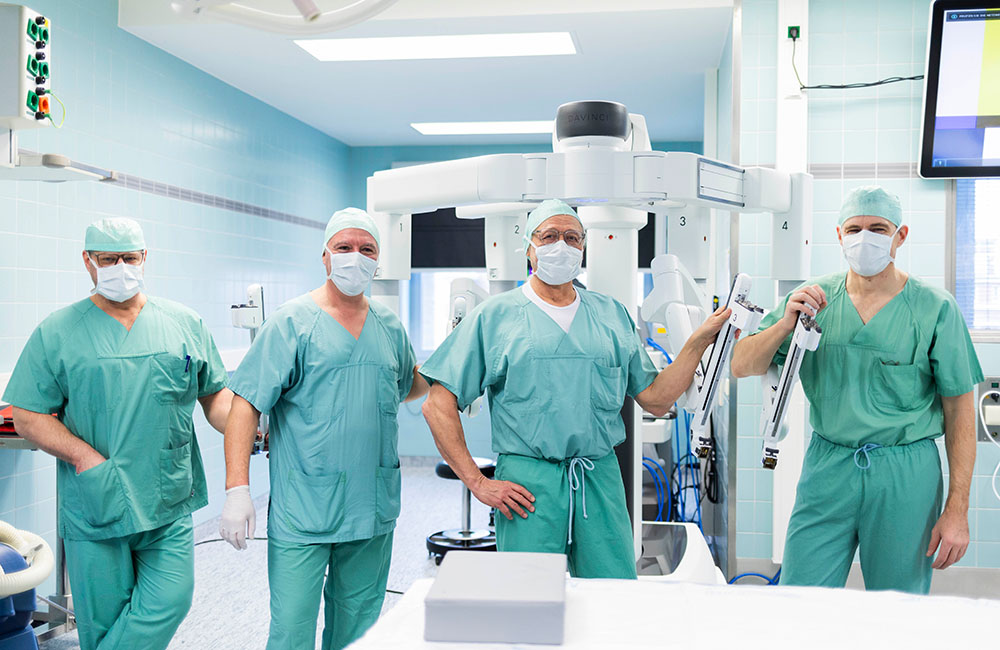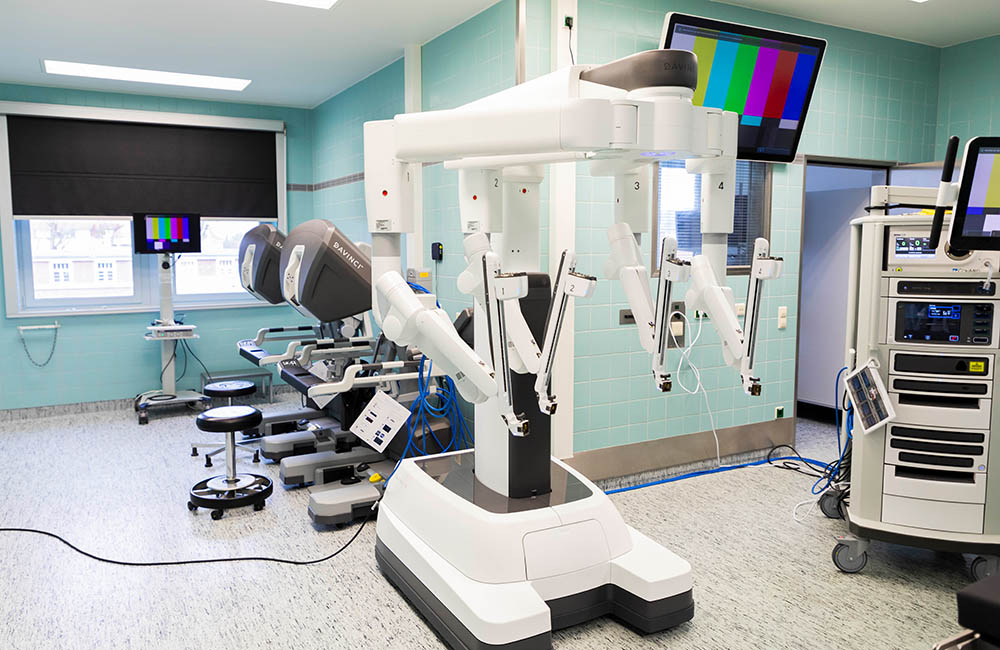University Medicine Magdeburg expands medical expertise: second DaVinci operating system put into operation
In terms of modernisation, Magdeburg University Medicine is focusing on cutting-edge technology and is planning a robotics centre for further innovations in medical research and treatment.
In December 2023, Magdeburg University Medicine put a second DaVinci system into operation. This will expand the range of services offered by University Medicine Magdeburg with another state-of-the-art device in the field of robotic surgery. With the help of this highly developed surgical system, minimally invasive operations (keyhole technique) can be performed with high precision.
Magdeburg University Hospital has successfully relied on robotic surgical technology for years: a total of 1220 operations have been performed since 2018. This high-tech device is mainly used for operations on the pancreas, liver, oesophagus and bowel as well as the bladder, prostate and in the field of gynaecology.
Prof. Dr Dr h. c. Roland S. Croner, Director of the University Clinic for General, Visceral, Vascular and Transplant Surgery Magdeburg, is delighted with the acquisition of the second DaVinci robot and says: "In future, this will enable additional appointments to be made for all specialities, which could lead to an increase in the number of operations.This means that even more patients could benefit from gentle, high-precision keyhole surgery." The new DaVinci robotic system is primarily used by the University Clinic for General, Visceral, Vascular and Transplant Surgery in Magdeburg. With more than 10 years of practice, robotic surgery is part of Prof Croner's expertise.

Photo (from left): Operating theatre nurse Stefan Stanko, Prof. Dr med. Frank Benedix, Senior Physician at the University Clinic for General, Visceral, Vascular and Transplant Surgery Magdeburg, Prof. Dr med. Hans-Jochen Heinze, Medical Director of the University Hospital Magdeburg, Prof. Dr med. Dr h.c.Roland S. Croner, Director of the University Clinic for General, Visceral, Vascular and Transplant Surgery Magdeburg, in front of the new DaVinci surgical system.
Photographer: Sarah Kossmann/UMMD
Prof. Dr Hans-Jochen Heinze, Medical Director of Magdeburg University Hospital, praises the acquisition of the DaVinci robot as an enhancement of the UKMD robotic technology site and emphasises: "Our scientific claim is, among other things, precision medicine and thanks to our portfolio of technological equipment and the expertise of our doctors, we can guarantee our patients the best possible medical care."
The system consists of a robotic unit, which is installed above the operating table, and a computer console from which the surgeon takes control.The robotic unit has several telescopic arms that can be used to insert both the surgical tool and a camera into the patient's abdomen. The abdomen is inflated using CO2 gas, while the tool arms are inserted into the abdomen through small incisions in the skin. The camera provides extremely clear images of the inside of the abdomen. From the console, the microsurgical instruments such as scissors, hooks and forceps can be controlled extremely precisely and in real time. In addition, the system enables movements at the tip of the instruments that can imitate the human wrist.
Advantages of the DaVinci surgical system
The DaVinci surgical system combines the advantages of minimally invasive surgery with high-resolution 3D visualisation technology and offers unique operating options for the surgical instruments.The surgeon remains indispensable and the system does not perform a single step independently.Instead, the system supports the surgeon in preserving functional structures such as nerve fibres by displaying the surgical site in three-dimensional and high-resolution form.The control commands are precisely transmitted to highly manoeuvrable, minimally invasive instruments that treat the healthy tissue gently and do not damage it.Sealing instruments prevent unnecessary blood loss.

Photo: DaVinci surgical system.
Photographer: Sarah Kossmann/UMMD
This minimally invasive method is a considerable improvement for patients compared to open surgery.Patients enter the operation with less fear and concern about post-operative pain and large scars. Furthermore, there is a lower risk of wound healing disorders, faster post-operative mobilisation and diet build-up during abdominal surgery and a shorter inpatient stay.






